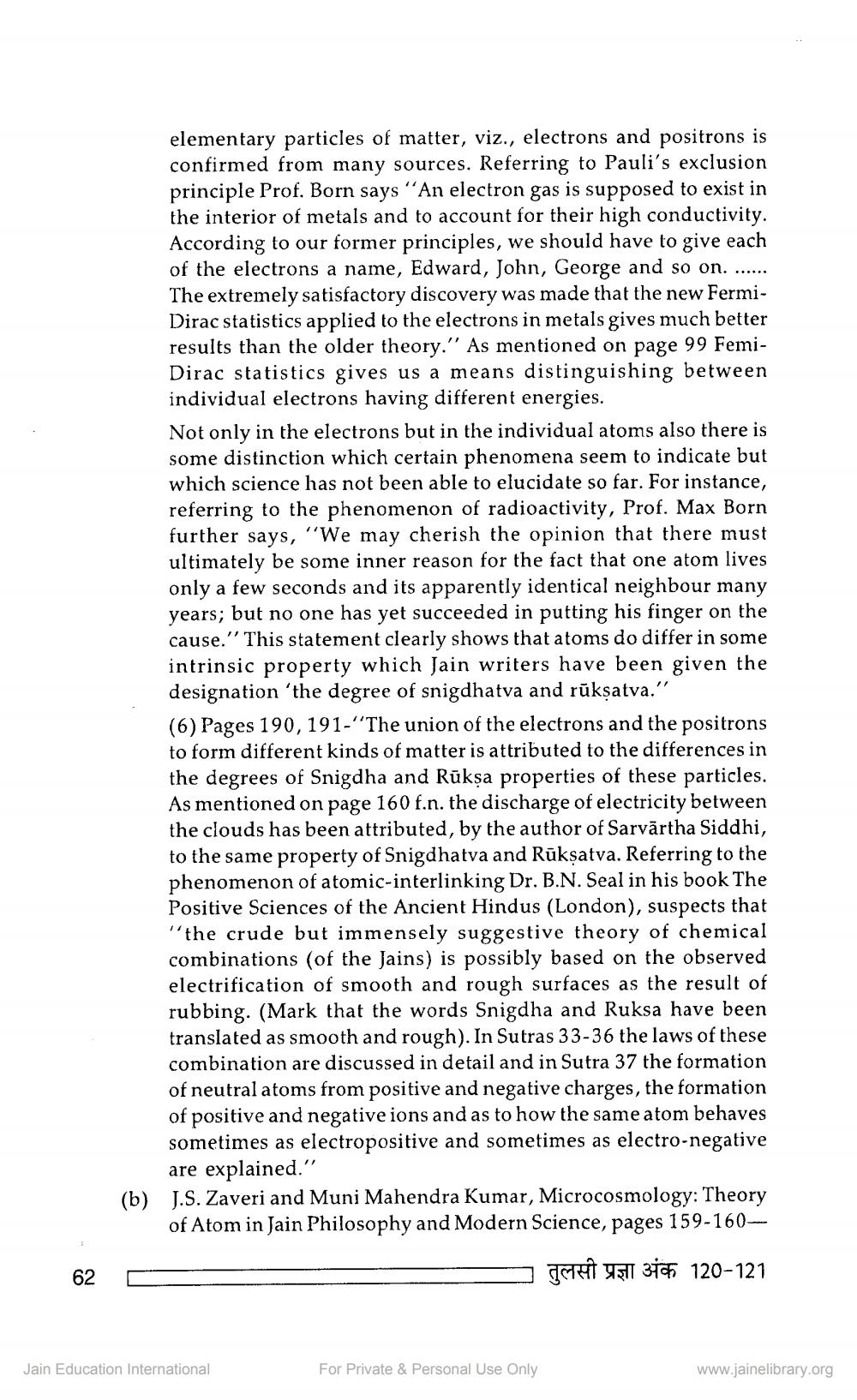________________
elementary particles of matter, viz., electrons and positrons is confirmed from many sources. Referring to Pauli's exclusion principle Prof. Born says "An electron gas is supposed to exist in the interior of metals and to account for their high conductivity. According to our former principles, we should have to give each of the electrons a name, Edward, John, George and so on. ...... The extremely satisfactory discovery was made that the new FermiDirac statistics applied to the electrons in metals gives much better results than the older theory." As mentioned on page 99 FemiDirac statistics gives us a means distinguishing between individual electrons having different energies. Not only in the electrons but in the individual atoms also there is some distinction which certain phenomena seem to indicate but which science has not been able to elucidate so far. For instance, referring to the phenomenon of radioactivity, Prof. Max Born further says, “We may cherish the opinion that there must ultimately be some inner reason for the fact that one atom lives only a few seconds and its apparently identical neighbour many years; but no one has yet succeeded in putting his finger on the cause." This statement clearly shows that atoms do differ in some intrinsic property which Jain writers have been given the designation 'the degree of snigdhatva and rūkşatva.' (6) Pages 190, 191-"'The union of the electrons and the positrons to form different kinds of matter is attributed to the differences in the degrees of Snigdha and Rūkņa properties of these particles. As mentioned on page 160 f.n. the discharge of electricity between the clouds has been attributed, by the author of Sarvārtha Siddhi, to the same property of Snigdhatva and Ruksatva. Referring to the phenomenon of atomic-interlinking Dr. B.N. Seal in his book The Positive Sciences of the Ancient Hindus (London), suspects that "the crude but immensely suggestive theory of chemical combinations (of the Jains) is possibly based on the observed electrification of smooth and rough surfaces as the result of rubbing. (Mark that the words Snigdha and Ruksa have been translated as smooth and rough). In Sutras 33-36 the laws of these combination are discussed in detail and in Sutra 37 the formation of neutral atoms from positive and negative charges, the formation of positive and negative ions and as to how the same atom behaves sometimes as electropositive and sometimes as electro-negative
are explained." (b) J.S. Zaveri and Muni Mahendra Kumar, Microcosmology: Theory
of Atom in Jain Philosophy and Modern Science, pages 159-160
62
C
-
JA
11 31
120-121
Jain Education International
For Private & Personal Use Only
www.jainelibrary.org




